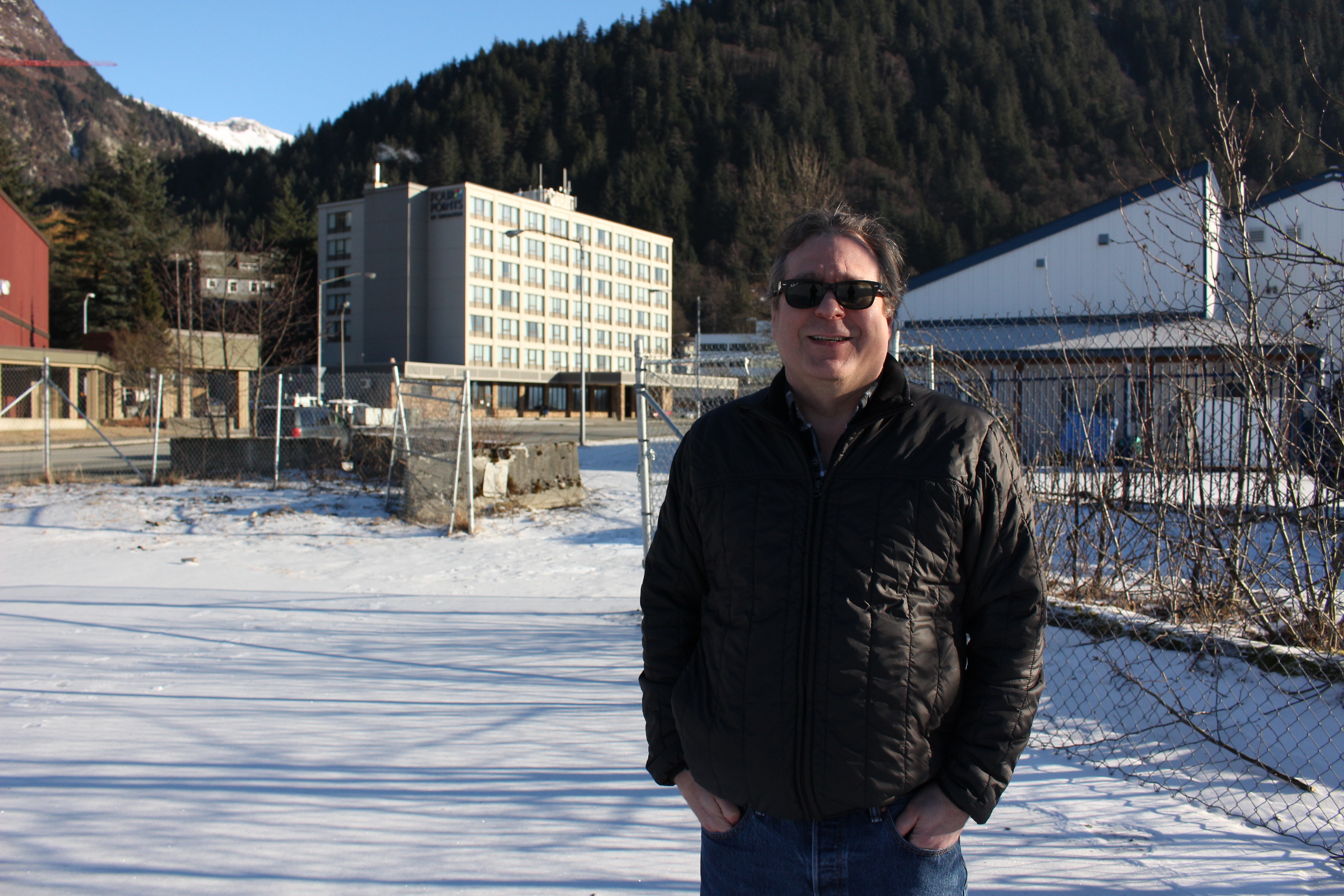
For years, a Juneau company has been trying to bring an innovative heating system to the capital city. But those plans have hit a snag. It says tapping into the local electric utility’s transmission lines has been a tough process for the little guy.
Duff Mitchell has a big vision for a small rectangular plot on the Gastineau Channel in downtown Juneau. His company — Juneau Hydropower — bought it back in 2017. He envisions it as the future site for a district heating facility.
District heating is popular in Scandinavian countries. Essentially, it’s a central source of heat that would be circulated through pipes around the city. In this case, that source would be a seawater heat pump.
The state is currently considering hooking up its downtown buildings. But for the time being, this is still an empty lot. Mitchell doesn’t think it will stay that way for long.
“What I’d really like to do is have pipes stored on the property and some heavy equipment and some other things getting ready for this,” Mitchell said. “And it’s a beautiful day out here today. There future’s bright out here with this kind of technology.”
But that bright future requires a new source of electricity. So, in addition to district heating, his plans also include constructing a multimillion dollar hydroelectric dam.
Mitchell needs to link up to the local electric utility’s transmission lines in order to connect his heat pump to the dam, and that’s what he says is slowing him down.
“But here I am. I’m shovel ready. I’m ready to put people to work. I’m ready to do things for my community. I’m ready to roll,” Mitchell said. “And I would like to have a handshake commitment and let’s work together.”
Of course, there’s no promise an electric utility will want to shake your hand.
In most states, this process would be governed by the Federal Energy Regulatory Commission (FERC). But Alaska is different.
“We are not subject to those same FERC rules,” Chris Rose said.
Rose is the Executive Director of the Renewable Energy Alaska Project, a nonprofit. He says FERC is hands-off when it comes to interconnection with independent power producers here.
“So what is good for everybody else in the lower 48 does not apply in Alaska,” Rose said.
In large part, he says it’s up to the utility to decide how they want to work with people. And not having that guarantee that’s it’s going to happen can make investors in renewable energy projects in Alaska skittish.
“They’re never going to feel comfortable if they don’t know what the cost of doing business is going to be. Or if they don’t even know whether they can do business because they can’t interconnect to the grid,” Rose said.
And here’s the issue Juneau Hydropower is having: Even though FERC doesn’t regulate transmission lines in Alaska, it does permit hydroelectric dams — like the one Duff Mitchell is trying to build to power the seawater heat pump.
Mitchell has a FERC license for the dam, but it turns into a pumpkin on Sep. 8 of this year if his company can’t submit a financial closing.
“I need that transmission agreement to close financing,” Mitchell said. “It won’t happen without it. You can’t start a project with this loose end.”
Although Mitchell says he has the financing lined up, the transmission line agreement is the missing link. Without it, he says his project looks risky to potential investors. FERC can grant an extension for the license. But it’s not always a given.
In the meantime, Mitchell has started the conversation about interconnection with the local utility, Alaska Electric Light & Power (AEL&P).
A Canadian company is trying to purchase the utility’s parent company, Avista. In a written statement, AEL&P said Juneau Hydropower would “continue the process” of interconnection with AEL&P.
Still, for a small energy provider like himself, Mitchell says there’s too many hoops to jump through.
Debbie Driscoll, a spokesperson for AEL&P, says this is an industry standard process.
“It’s not something we’ve made up,” Driscoll said.
Right now, the ball is back in Mitchell’s court. Driscoll says the next step is an engineering study that would look at the potential impacts on the grid, and she says there’s a lot to consider. Mitchell’s hydroelectric dam wouldn’t be small, compared to the overall system, so it’s important to make sure everything is carefully vetted, for safety and reliability. AEL&P doesn’t want a new hydro dam to negatively impact its customers.
“Because Juneau’s grid is what we term an electrical island, the proposed project could have a very large impact on our system operations and our reliability,” Driscoll said. “This is a similar process to what we would use to any interconnection of this size.”
Duff Mitchell says Alaska’s capital city is changing: There are more electric vehicles and electric buses could be on the way. The way he sees it, the added hydroelecticty from his dam could only be a good thing, and a downtown seawater heat pump would be a fitting innovation.
“I know at the end of the day I’m going to win. I have a good product. It helps,” Mitchell said. “I think we need to go with the rest of the flow of America, and I think it is going to help our state immensely where we can get rid of these barriers.”
Mitchell says he wishes it were easier for more independent power producers in Alaska to their get projects up and running.




